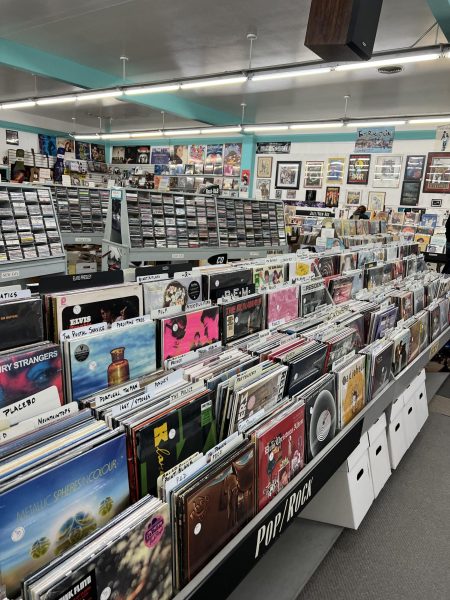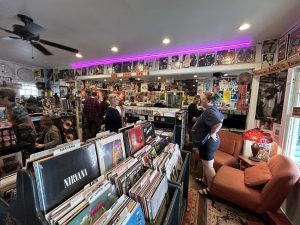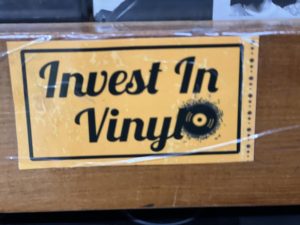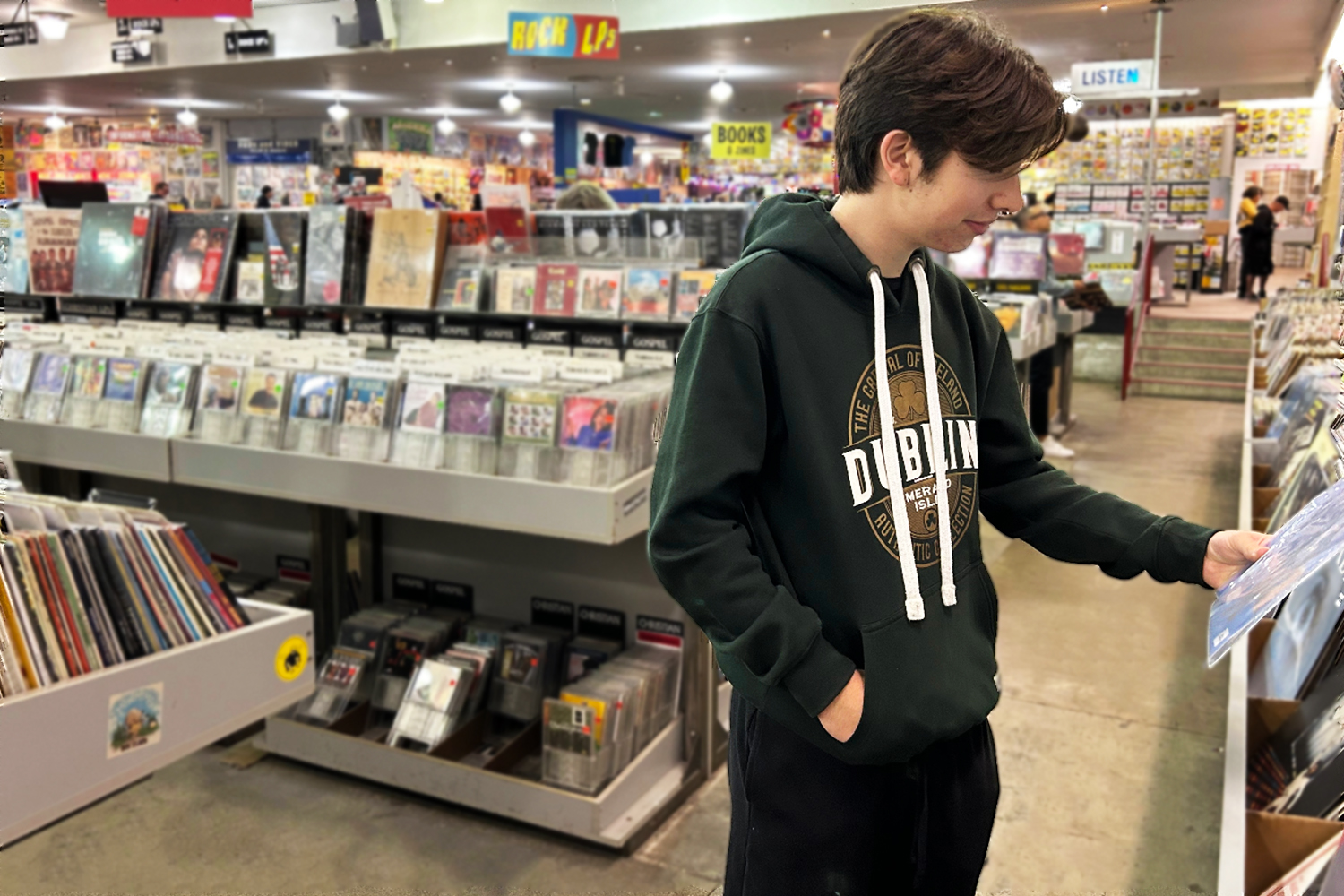One of the most important parts of music for many people is collection. Since all music in the past was sold in physical vinyl, CDs, and cassette tapes, the continuation of listening physically remains largely nostalgic for some, and a cool historical novelty for others.
With many new forms of music purchases and subscriptions, the choice becomes a difficult one for everyone trying to decide which is the better way to listen.
Vinyl vs. Digital
Back in Black, Dark Side of the Moon, Hotel California, and Led Zeppelin IV are just a few of the best-selling out of millions of unique albums circulating throughout music stores.
These vinyl record stores have long been a central cultural hub for music enthusiasts and nostalgic people. However, the growing relevancy of online music subscriptions has made it difficult for many business owners to remain profitable.
Spotify, for instance, has seen incredible success by offering over a hundred million different songs for free to all users, with paid subscriptions removing ads. With that, Spotify and similar services by Apple and Amazon have surged to a dominant market share in the music industry. According to streaming statistics by Forbes, music streaming accounts for 84% of total music industry revenue
Despite that, vinyl record store owners continue to successfully sell to thousands of local avid music lovers.
Vinyl Solutions Records
For almost 40 years, Tommy “Toonz” Predovich of Vinyl Solution Records in San Mateo has brought the community together with a shared love of music. His store attracts hundreds of monthly customers looking for new music to try.
Most of his profits come from used record sales, selling previously opened records he bought from others at a slight profit. New records sell for around $25-45, while used sell for anywhere from a dollar to $15, allowing shoppers to find great deals in pre-loved records.
“The records are very affordable compared to many other stores, and my best-used records generally sell within a day,” Predovich said.

Over the pandemic, Predovich saw a large drop in sales and foot traffic. But he hasn’t struggled to get back up.
“There’s been about a 15% increase in sales since before the pandemic, and I’m very busy every week,” Predovich said.
Collecting vinyl began as a hobby for him. He started working part-time at the store over 40 years ago but fell in love with music. He bought the store in 1984 to see how things operated.
But he made enough money to continue the business and has since been the go-to local music store for the San Mateo County area.
For most of the people buying from him, the novelty and quality of the music are much better.
“The vibrations that physical music gives is just a different experience that digitally listened music gives. For me, if it was recorded physically, it should be listened to physically,” Predovich said.
Online music popularity
However, owners also struggle to keep up with online music’s convenience and inexpensiveness. For this reason, continuing with the newest generation of listeners is a difficult task.
New record sales have also been falling due to rising prices through inflation and heightened production costs. According to Billboard, the average price of a vinyl record has gone from $20 in 2005 to about $30 in 2022. Many store owners have gone out of business or have struggled to remain profitable because of the loss of business caused by the price increases.
“The new vinyl record sales will probably decline because I can’t afford to keep new inventory,” Predovich said.
Online music subscriptions have also dropped in price over time. While most digital music had to be bought and downloaded for up to nine dollars an album, it now runs as a music subscription service. Spotify, for instance, is free with advertisement breaks to anyone or for $5.99 a month for students, and $10.99 for anyone looking to listen to almost anything without any ads.
It happens to be as convenient as this:
And yet, physical music stays highly relevant to a large majority of the population which is seeing consistent increases.
Physical music growth
Record stores continue to remain a significant part of their community. Recent major jumps in physical sales, particularly in the used record market, display the resilience of these stores throughout the rise of the convenience of digital music.
An RIAA Yearly report shows an increase from a $1.16 billion market share in physical sales in 2020 to $1.73 billion in 2022. The drastic increase following an increase in subscription services shows a clear increase in interest in owning physical music.
It’s also important to note that physical record sales account for a vast majority of revenue for music artists. A Statista report shows that physical music sales of vinyl and CDs account for roughly 58% of revenue for respective artists.
Most of the remaining revenue lies in performance rights, while digital-only accounts for about 12%. This is mostly because of the minor profits artists make from online music, which shows companies like Spotify and Apple Music taking a vast majority of the subscription sales.
According to Andrew Hoffman’s verified statistics, most people listening to vinyl are between the ages of 25-54, with only 21% being above the age of 65. There is also a significant percentage of listeners from the youngest generations.
Part of what makes physical music so intriguing for people is the complexities of the functionality of vinyl records and their history.
“I like the intuitive design of vinyl and their functionality. It impresses me how they could give people music for so long before digital audio,” said Carlmont Sophomore Caden Moon.
Many people are also interested in the ability to listen to full albums, rather than just a few songs, that record listening provides. This discovery of new songs and the hobby of album collecting continue to grow interest in physical music.
Amoeba Music
Amoeba Music is an independent American music store chain in Berkeley, San Francisco, and Los Angeles.
What makes Amoeba so popular isn’t just the music deals they offer. They feature shows and signings, which, along with the social effect of buying music, bring people of the community together.
The San Francisco location attracts hundreds of customers daily and sustains a highly profitable online presence, selling vinyl, CDs, merch, and more.
“There are many people that come into the store to buy vinyl. We also sell a lot online to people not willing to go in the store and for older listeners that call in orders,” said Sean Brown, an employee of Amoeba.
They are currently the world’s largest independent record store and demonstrate the resilience of record stores through the expansion of online music.
The local effect of Lost and Found Records

Maria Armstrong owns a record store in Knoxville, Tennessee, right outside Nashville, the center for country music in the United States.
She opened Lost and Found Records in 1990 during the decline of physical music sales. Despite being told she was making a mistake, she began to build a business that would later be the most successful record store in the area, providing monthly records to thousands of consistent customers.
The most popular artists include Bob Dylan, Led Zeppelin, and Johnny Cash, with rock and country being the most popular music genres.
On a regular day, the store attracts many avid music lovers who converse about their favorite albums, the best deals they find, and new songs they discover. The community that Lost and Found Records creates attracts recurring and new customers intrigued by the great reviews they receive.
Record Store Day
Armstrong also credits Record Store Day as being responsible for the continuing success of her business by bringing hundreds of buyers on April 20 every year.
“There would be cars lined up for blocks waiting to get in the store,” Armstrong said.
The event, which started in 2007, features artists releasing exclusive records for the day and physical discounts on records.
“Notable music producers would release records only available on that day. This would attract many collectors looking to get special records from their favorite artists,” Armstrong said.
Amoeba Music also has a huge Record Store Day presence.
“We have people lined up for blocks looking to find exclusive deals and albums,” Brown said.

A Statista report confirms increases in sales at independent record stores during the week of Record Store Day in the United States from 2011 to 2018. According to the source, sales at independent record stores increased by up to 200% during the week of Record Store Day in 2018.
“Record Store Day initially brought a large boost in business. It allowed smaller stores to gain popularity over large chain stores,” Predovich said. “Though, it’s not needed as much anymore, as the effects of it have transitioned into consistent popularity. It also adds extra stress on the customers and owners to get deals.”
What’s next
Vinyl record stores show no sign of going away anytime soon because of their ability to bring people together by doing things they love most.
“Collecting music and listening on vinyl is enjoyable for me and helps bring in recurring customers every day looking to broaden their listening,” Predovich said.




